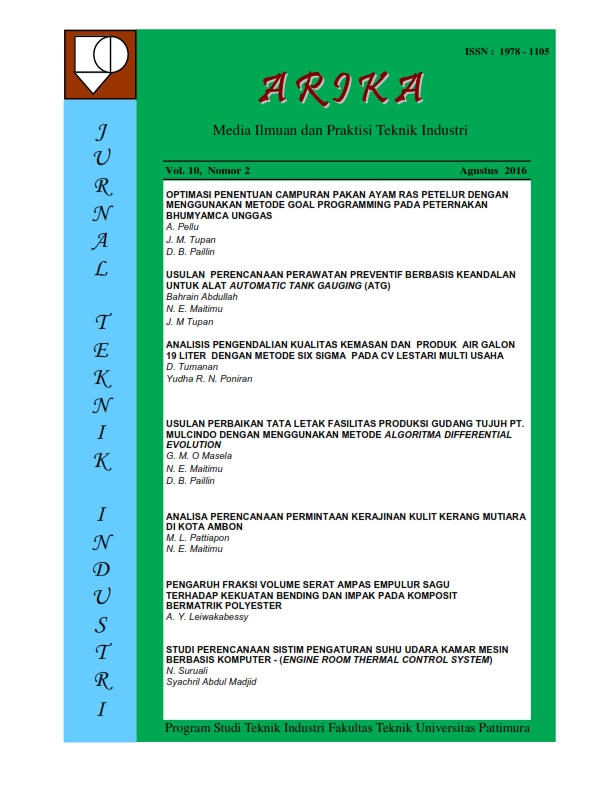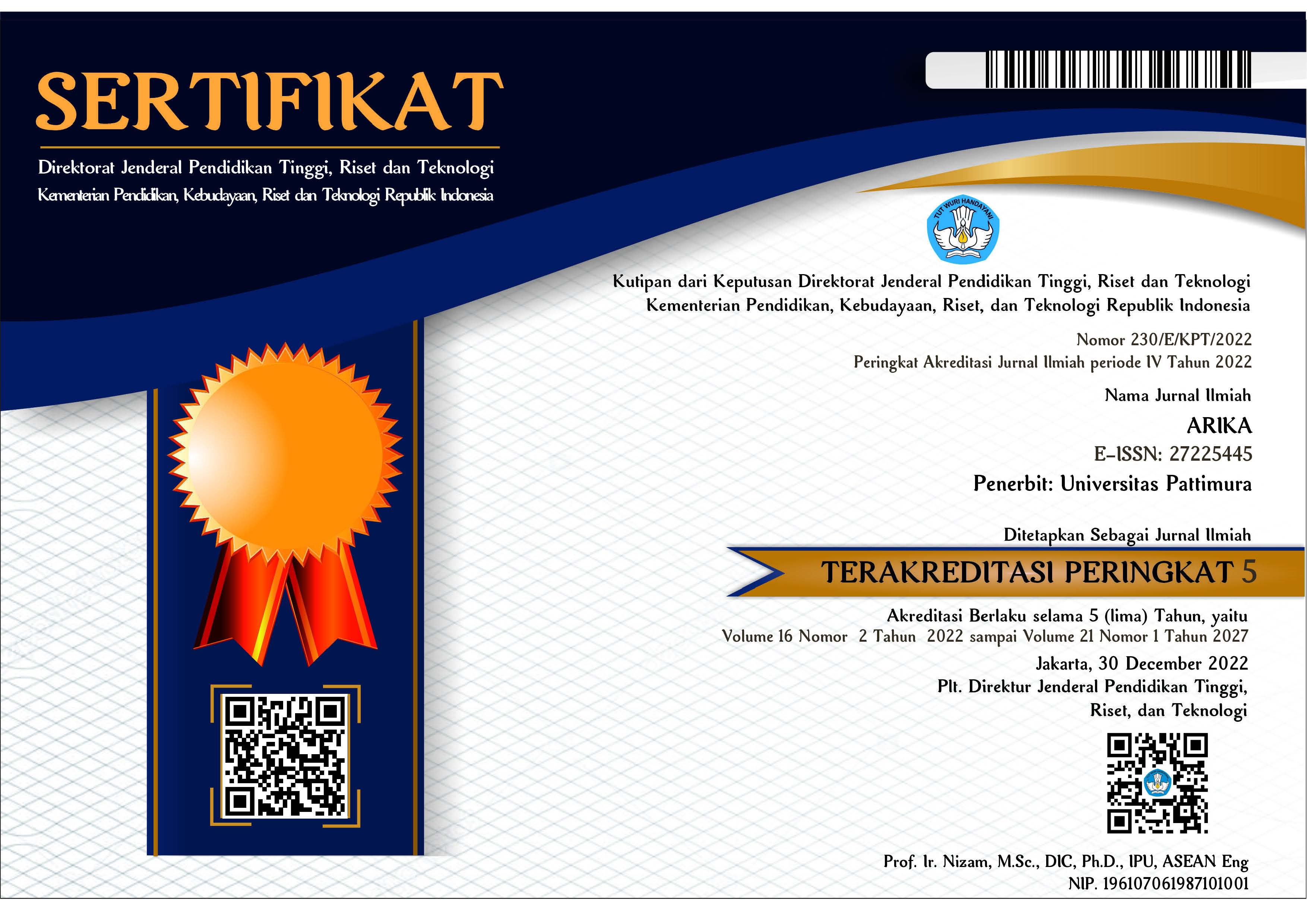OPTIMASI PENENTUAN CAMPURAN PAKAN AYAM RAS PETELUR DENGAN MENGGUNAKAN METODE GOAL PROGRAMMING PADA PETERNAKAN BHUMYAMCA UNGGAS
Abstract
Penilitian ini, dilakukan pada kebutuhan bahan baku pakan ayam ras petelur (layer). Berdasarkan pengolahan data yang dilakukan dengan software WinQSB untuk optimasi penentuan campuran pakan dengan menggunakan perhitungan Goal Programming dengan variabel bahan baku berupa konsentrat 801, dedak padi, dan jagung. Diperoleh hasil goal untuk jumlah pakan sebesar 1200 kg bahan pakan untuk konsentrat 801 MS 390 kg, dedak padi 325 kg, dan jagung 485 kg. Berdasarkan nutrisi yang dibutuhkan ayam ras petelur (layer) yang lebih dari umur lebih dari 5 bulan atau lebih dari umur 20 minggu sampai dengan afkir sebagai acuan penyusunan pakan (metabolisme energi, protein kasar, lemak kasar, serat kasar, kalsium, posfor) diperoleh biaya minimum sebesar Rp. 4.830.000. Sedangkan dari komposisi pakan bhumyamca unggas, biaya bahan pakan yang dikeluarkan sebesar Rp. 5.330.000. Dengan demikian terjadi penghematan biaya pakan sebesar Rp. 500.000.
Downloads
An author who publishes in the ARIKA Jurnal agrees to the following terms:
- The author retains the copyright and grants ARIKA journal the right of first publication of the work simultaneously licensed under the Creative Commons Attribution-ShareAlike 4.0 License that allows others to share the work with an acknowledgment of the work's authorship and initial publication in this journal.
- The author is able to enter into separate, additional contractual arrangements for the non-exclusive distribution of the journal's published version of the work (e.g., post it to an institutional repository or publish it in a book) with the acknowledgment of its initial publication in this journal.
- The author is permitted and encouraged to post his/her work online (e.g., in institutional repositories or on their website) prior to and during the submission process, as it can lead to productive exchanges, as well as earlier and greater citation of the published work (See The Effect of Open Access).










